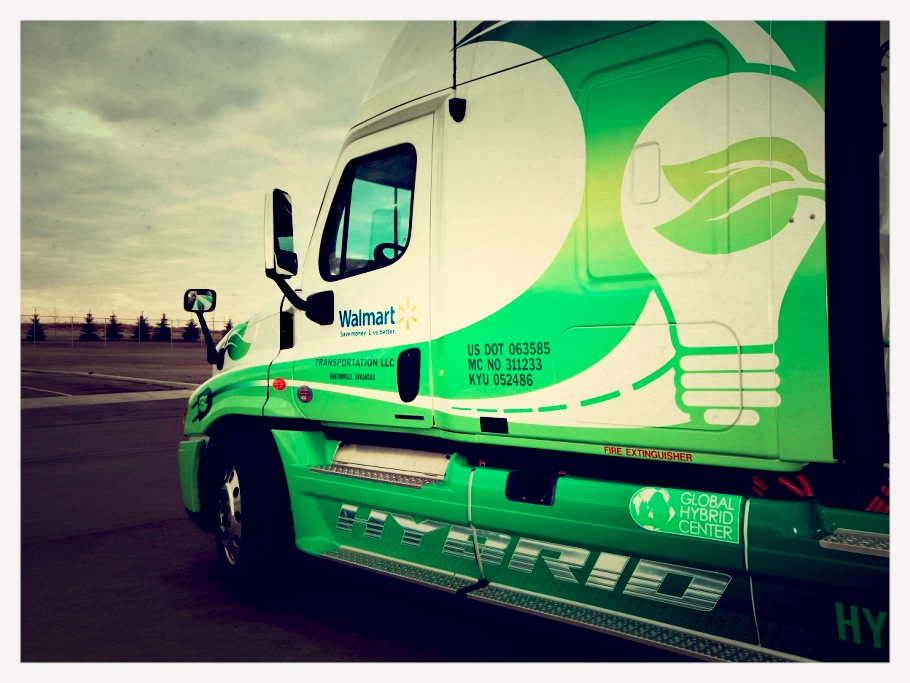Leave no stone unturned when it comes to staying on top of market developments that will keep your fleet as green as possible.
Everyone contributes to the sustainability picture at a fleet. No one person or department is responsible for the fleet’s carbon footprint. If you do it right, every department or area can contribute something to a fleet’s overall effort to be green.
Spec it right
A good place to start with your sustainability efforts is when adding new vehicles to the fleet. Carefully review vehicle specifications based on duty cycle. Some obvious places to make gains are by spec’ing:
- Automated manual transmissions — AMTs know the exact right time to shift-based on grade, load, etc. which leads to more fuel-efficient operation.
- Low rolling resistance tires — Reducing the energy loss as tires roll decreases rolling efforts and improves fuel economy.
- Tire pressure monitoring systems — Underinflated tires waste fuel. A tire pressure monitoring system alerts drivers when tire pressure is below a pre-set limit so they can add air to get tires properly inflated.
- Electric APUs — Providing heating and air conditioning, e-APUs eliminate idling while allowing drivers to be comfortable in the cab during their mandated rest breaks.
- Aerodynamic devices — While truck makers have done a good job optimizing their trucks for aerodynamics, there are add-on aero devices for both the tractor and trailer that can help improve fuel economy even further.
Make operational changes
Once you have your vehicles spec’d properly for their intended use, it’s time to move on to reviewing your operations to look for ways to improve.
- Limit idle — If drivers are returning home every day, you won’t need to have an e-APU, but that does not mean you don’t have to worry about idling. Idling not only wastes fuel, but also releases harmful emissions into the atmosphere. Set idle timers to two to three minutes in order to limit idling and also set idle percentage goals. Then review idle percentages and coach drivers whose idle percentages are outside the norm.
- Extend drain intervals — With the aid of fluid analysis, it is possible to extend oil drain intervals which results in using less oil and fewer filters.
- Optimize routing — Ask yourself when was the last time you looked at your routing. Circumstances change and with that so can your customers’ needs. At least once a year, review routing to see if there are ways to make it more efficient.
- Eliminate empty backhauls — Nothing wastes more fuel than pulling an empty trailer. Look for ways to fill up trailers on their way back to your facilities.
The shop can contribute
Don’t forgot about the shop when looking to reduce the environmental impact of your fleet.
- Eliminate aerosol-based cleaners —Purchase products in bulk and have technicians refill their respective products as necessary.
- Switch to aqueous-type cleaners — Solvent-based cleaners are petroleum products while aqueous cleaners have water as their base. They have a lower VOC content and reduce a low hazardous air pollutant content.
Keep searching
At the risk of sounding like a cliché, being green is a journey not a destination. Even if you have made great strides at reducing your fleet’s carbon footprint, there is always more you can do. Make sure you keep exploring things like alternative fuel vehicles, fuel saving add-on technologies, better ways to route vehicles, changes that can be made in the shop, etc.
While every new technology might not be right for your operation, you need to continue to investigate new developments because chances are at least some of them will make sense for you. Leave no stone unturned when it comes to staying on top of market developments that will keep your fleet as green as possible.
Source: https://www.fleetowner.com
CUT COTS OF THE FLEET WITH OUR AUDIT PROGRAM
The audit is a key tool to know the overall status and provide the analysis, the assessment, the advice, the suggestions and the actions to take in order to cut costs and increase the efficiency and efficacy of the fleet. We propose the following fleet management audit.




